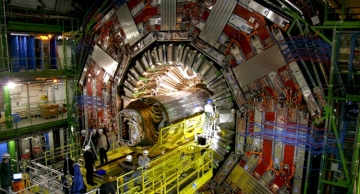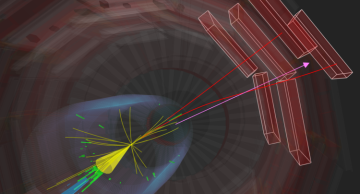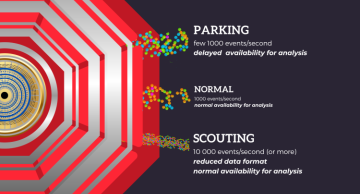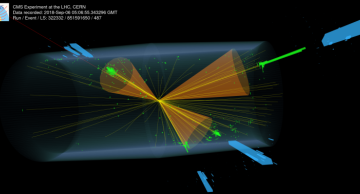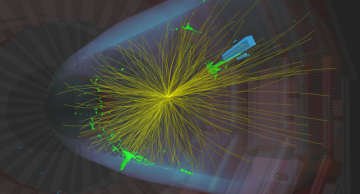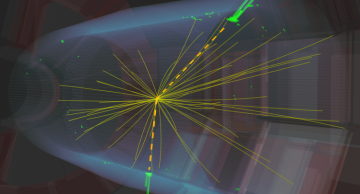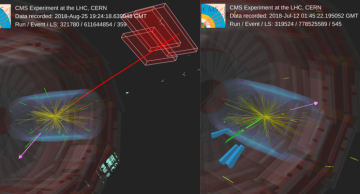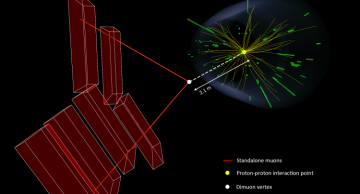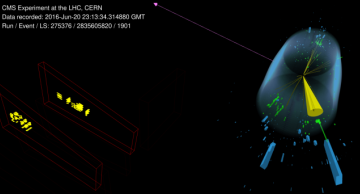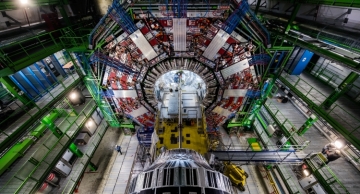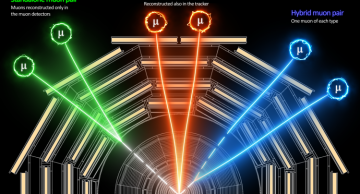New in! CMS physicists search for heavy cousins of the neutrino in beauty meson decays
Back in 2018, the physicists of the CMS experiment designed and recorded a B-meson-enriched data sample, the “B-Parking” data set. The B mesons (short for…
Cosmological observations tell us that Dark Matter makes up roughly 80% of all the matter in the Universe. However, no Dark Matter particle has ever been observed. To verify whether it can be produced in the laboratory, the CMS Collaboration at the…
A new CMS paper describes how the CMS experiment can squeeze more physics out of the LHC data by using smarter data selection/reduction techniques.
The Large Hadron Collider produces an avalanche of data; the beams collide 40 million times per…
One of the events determined by the AI algorithm to be highly anomalous and therefore potentially coming from a new particle. The central jet shows particles clustered around two different cores within the cone, a configuration distinct from a…
Event display for a potential SUEP event, recorded at CMS in 2018, showing the characteristically high multiplicity of soft tracks in yellow.
Could there be a “dark world“ composed of invisible particles held together by a new strong dark force,…
The main goal of the LHC physics programme is to deeply understand the fundamental principles of particles and their interactions. As part of this quest, physicists are searching for evidence of new particles, which would potentially confirm the…
Imagine diving into the very core of the universe, where the tiniest pieces that make up everything hold the answers to big cosmic questions. Leading this exciting journey is the CMS team at the Large Hadron Collider (LHC). We are on a mission to…
Two key properties of neutrinos in the standard model of particle physics (SM) are that they are massless and “left-handed”, i.e. their spin is always opposite to their momentum. The observation of neutrino oscillations posed a big challenge to the…
The first search for new physics using LHC data collected in Run 3 has been presented by CMS. It was shown during this year’s EPS conference in Hamburg and relied on both the new data and refinements of the trigger system made for Run 3. It…
Most searches for new physics beyond the standard model (SM) focus on particles that decay almost instantly after being produced. However, many theories predict particles that travel a long distance, even up to meters, before decaying. Observing…
We have this idea that we communicate best within our own generation, but is this true? Who is to say that a second-generation lepton and a third-generation quark have nothing in common? Many observed phenomena in particle physics are conspicuously…
“The important thing”, says Einstein, “is not to stop questioning”, and we, as humans, never have. What is it all made up of? How does it fit together? We’ve been yearning to answer these questions for aeons, with our collective efforts…

